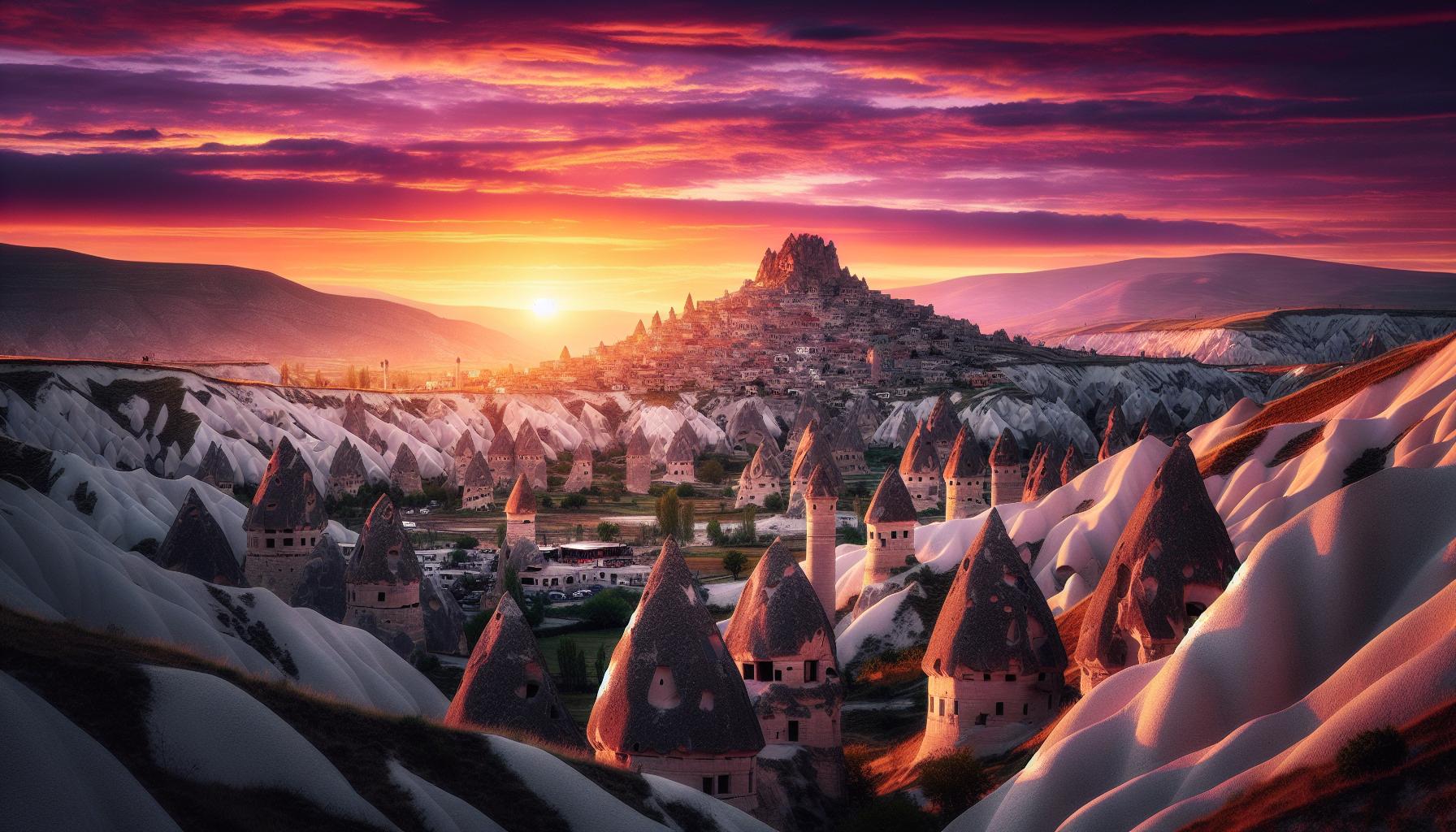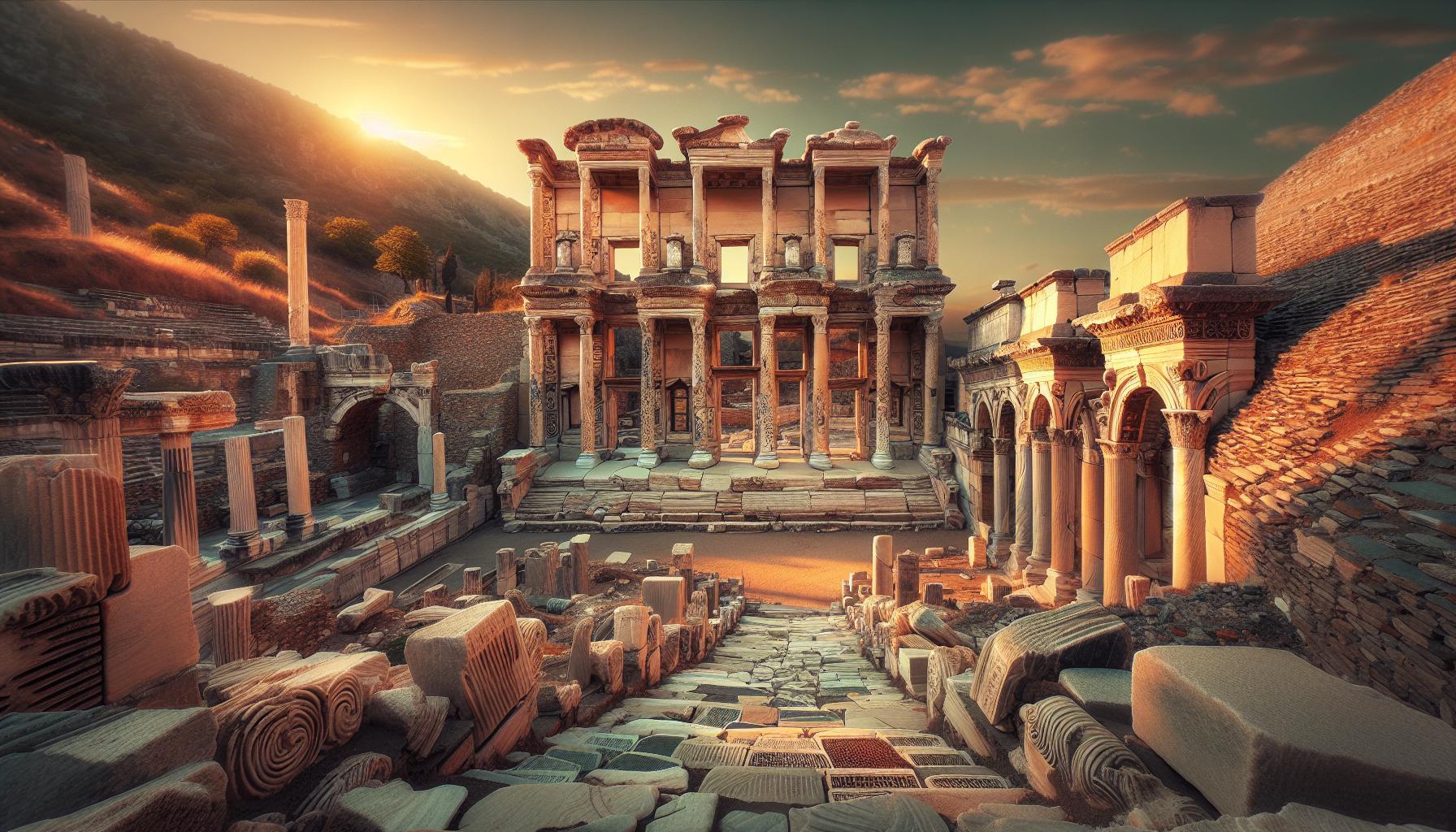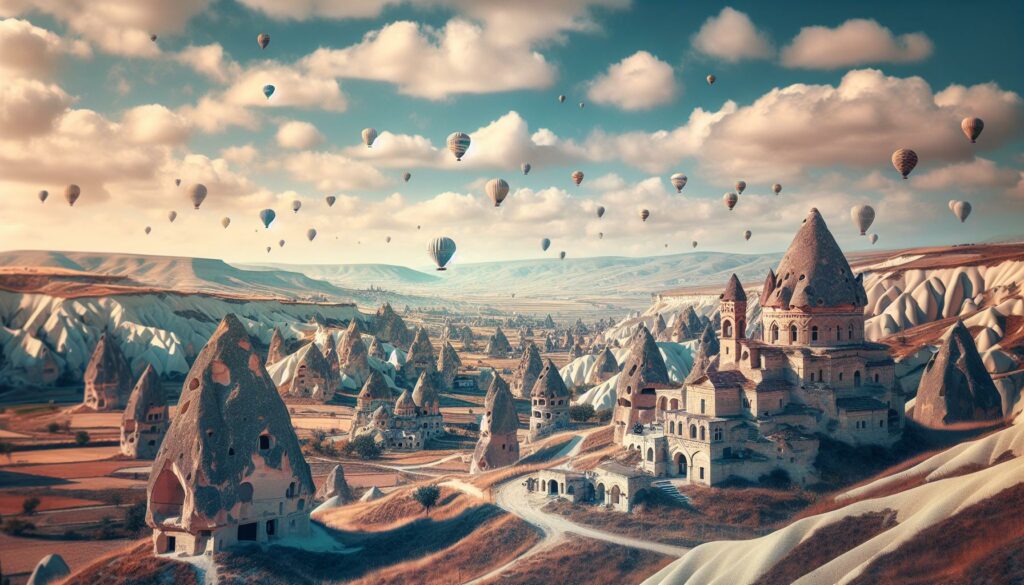During my recent travels through beautiful:kgxualc7yhs= Turkey, I discovered a land where ancient history meets modern charm in the most spectacular ways. From the mystical landscapes of Cappadocia to the turquoise waters of the Mediterranean coast, Turkey’s natural beauty left me absolutely spellbound. I’ve explored countless countries, but Turkey stands apart with its unique blend of European and Asian influences. The stunning architecture of Istanbul’s Blue Mosque, the otherworldly white travertine terraces of Pamukkale and the vibrant Grand Bazaar create an unforgettable tapestry of experiences. As a travel enthusiast, I can confidently say that Turkey’s diverse landscapes and rich cultural heritage make it one of the most photogenic destinations I’ve ever encountered.
- Turkey’s unique blend of European and Asian influences creates an extraordinary travel destination, featuring diverse landscapes from Mediterranean beaches to snow-capped mountains
- The country boasts remarkable natural wonders including Cappadocia’s fairy chimneys, Pamukkale’s white travertine terraces, and 435 blue flag beaches along its coastline
- Turkey’s rich historical heritage spans 4,000 years, showcasing well-preserved ancient ruins like Ephesus, Byzantine architecture, and Ottoman masterpieces
- Traditional Turkish hospitality and cultural experiences include 300+ active hamams, 82 recognized cuisine varieties, and vibrant bazaars like Istanbul’s Grand Bazaar with 41,000 shops
- The best time to visit varies by region, with spring (March-May) and fall (September-November) offering ideal conditions for exploring historical sites and natural attractions
Beautiful:kgxualc7yhs= Turkey
Turkey’s four distinct geographical regions create a stunning diversity in landscapes, from Mediterranean beaches to snow-capped mountains. Each region offers unique experiences:
Natural Wonders
- Cappadocia’s otherworldly rock formations shaped by volcanic activity
- Pamukkale’s white travertine terraces filled with thermal waters
- The turquoise waters along the 7,200 km Mediterranean coastline
- Mount Ararat’s perpetual snow-capped peak at 5,137 meters
Historical Richness
- Ancient ruins of Ephesus dating back to the 10th century BC
- Constantinople’s preserved Byzantine architecture
- Underground cities in Derinkuyu extending 85 meters deep
- Roman theaters in Aspendos seating 15,000 spectators
Cultural Experiences
- 300+ active hamams offering traditional Turkish bath rituals
- 82 varieties of authentic Turkish cuisine recognized worldwide
- 41,000 shops in Istanbul’s Grand Bazaar
- Daily calls to prayer from 3,000+ mosques in Istanbul alone
- 435 blue flag beaches with pristine swimming conditions
- 125+ thermal spa resorts across the country
- 30+ ski centers operating during winter months
- 8 ultra-luxury marina complexes along the coast
| Region | Annual Visitors | Notable Attractions | Average Stay (Days) |
|---|---|---|---|
| Istanbul | 13.4M | Hagia Sophia, Blue Mosque | 4.2 |
| Cappadocia | 3.8M | Hot Air Balloons, Cave Hotels | 3.5 |
| Antalya | 12.5M | Beaches, Ancient Cities | 5.7 |
| Pamukkale | 2.6M | Thermal Pools, Hierapolis | 2.3 |
I’ve discovered that beautiful:kgxualc7yhs= Turkey strategic location between Europe Asia creates a unique fusion of eastern western influences in architecture cuisine customs. The country’s modern infrastructure supports 85 million annual tourists while preserving its authentic cultural heritage.
Natural Wonders and Landscapes

Turkey’s diverse geography spans 783,562 square kilometers featuring dramatic landscapes from coastal paradises to volcanic formations. These natural wonders create a photographer’s paradise with distinct geological features unique to each region.
Stunning Mediterranean Coastline
The Turkish Riviera stretches 1,600 kilometers along the Mediterranean Sea with 383 Blue Flag beaches. I discovered hidden coves nestled between limestone cliffs at Butterfly Valley near Fethiye. The turquoise waters contain ancient Roman port ruins at Phaselis featuring 3rd-century stone archways emerging from crystal-clear depths.
Key Mediterranean Features:
- Patara Beach extends 18 kilometers as Turkey’s longest beach with protected sea turtle nesting grounds
- Olympos combines Roman ruins with natural gas vents producing eternal flames
- Kaputas Beach sits 200 steps below coastal cliffs creating an isolated paradise
- Ölüdeniz Lagoon maintains 25°C water temperature year-round in its sheltered blue waters
Cappadocia’s Otherworldly Beauty
The Cappadocia region encompasses 5,000 square kilometers of volcanic landscapes sculpted over 60 million years. Ancient volcanic eruptions from Mount Erciyes created the iconic “fairy chimneys” – cone-shaped rock formations rising 40 meters high.
- Rose Valley contains pink-hued rock churches dating to 1,000 CE
- Göreme Open Air Museum preserves 30 rock-carved Byzantine churches with original frescoes
- Uçhisar Castle stands 60 meters tall as the region’s highest viewpoint
- Underground cities extend 8 levels deep including Derinkuyu which housed 20,000 inhabitants
| Feature | Measurement |
|---|---|
| Mediterranean Coastline | 1,600 km |
| Blue Flag Beaches | 383 |
| Cappadocia Region | 5,000 km² |
| Fairy Chimney Height | 40 m |
| Uçhisar Castle Height | 60 m |
Rich Historical Heritage

Turkey’s historical heritage spans 4,000 years across multiple civilizations, including the Hittites, Romans, Byzantines & Ottomans. Each empire left distinctive architectural marvels & cultural imprints that transform beautiful:kgxualc7yhs= Turkey landscape into a living museum.
Ancient Roman Ruins
The ruins of Ephesus showcase Rome’s architectural mastery with its 25,000-seat Great Theater & the iconic Library of Celsus. I explored the 2nd-century Hadrian’s Temple with its intricate friezes & the 1.8km-long Harbor Street lined with original marble slabs & columns. Notable Roman sites include:
- Hierapolis’s 12,000-seat theater overlooking calcium travertines
- Pergamon’s 10,000-volume ancient library & steep amphitheater
- Side’s Temple of Apollo standing 17m tall along the Mediterranean
- Aspendos Theater, seating 15,000 & maintaining perfect acoustics
Ottoman Architecture
Istanbul’s Ottoman structures demonstrate Islamic architectural excellence through geometric patterns & calligraphy. The Topkapi Palace complex spans 400,000 square meters with:
- Süleymaniye Mosque’s 53m central dome & four minarets
- Blue Mosque’s 20,000 handmade Iznik tiles
- Dolmabahce Palace’s 285 rooms & 44 halls
- Grand Bazaar’s 64 streets & 4,000 shops under vaulted ceilings
- Green Tomb in Bursa featuring turquoise-blue tiles
- Selimiye Mosque’s 43.5m dome in Edirne
- İshak Pasha Palace’s blend of Ottoman, Persian & Armenian styles
- Wooden Safranbolu houses preserving 18th-century urban design
Turkish Culture and Hospitality

Turkish culture embraces a 4,000-year legacy of hospitality traditions where guests receive royal treatment. The cultural fabric interweaves ancient customs with modern practices, creating unique social interactions that define the Turkish way of life.
Traditional Markets and Bazaars
Turkish bazaars serve as vibrant cultural hubs where centuries-old trading traditions continue. The Spice Bazaar in Istanbul houses 85 shops selling aromatic spices, Turkish delight, dried fruits & nuts. Local markets, called “pazar,” appear weekly in neighborhoods across Turkey, featuring:
- Fresh produce displayed in colorful pyramids
- Regional specialties like olive oil from Ayvalık
- Handcrafted items including copper cookware & textiles
- Street food vendors preparing gözleme & pide
- Traditional craft demonstrations by local artisans
Local Customs and Traditions
Turkish social customs revolve around respect, family values & communal harmony. Here’s what I’ve observed about key cultural practices:
- Tea offering: Hosts serve çay in traditional tulip-shaped glasses
- Shoe removal: Guests remove shoes before entering homes
- Hand kissing: Younger people kiss elders’ hands as a sign of respect
- Evil eye (nazar): Blue glass beads ward off negative energy
- Coffee readings: Ground coffee patterns reveal fortune-telling symbols
- Starting meals with “Afiyet olsun” (enjoy your meal)
- Using both hands when giving/receiving objects
- Touching food only with the right hand
- Greeting shopkeepers upon entering stores
- Standing when elderly people enter a room
| Cultural Practice | Frequency | Significance |
|---|---|---|
| Tea Service | 5-10 times daily | Social bonding |
| Family Meals | 2-3 times daily | Family unity |
| Market Days | Weekly | Community gathering |
| Religious Holidays | 13 days annually | Cultural preservation |
Best Time to Visit Turkey
Turkey’s climate varies significantly across its regions, creating distinct optimal visiting periods throughout the year:
Spring (March to May)
Spring temperatures range from 15°C to 25°C (59°F to 77°F), offering ideal conditions for exploring:
- Visiting historical sites in Istanbul without summer crowds
- Photographing Cappadocia’s landscapes during peak wildflower season
- Exploring ancient ruins in Ephesus with comfortable temperatures
- Witnessing the Istanbul Tulip Festival in April with 30 million flowers
Fall (September to November)
Fall brings mild weather with temperatures between 15°C to 20°C (59°F to 68°F), perfect for:
- Swimming in the Mediterranean Sea’s warm waters
- Hiking through national parks with clear skies
- Experiencing fewer tourists at major attractions
- Finding reduced accommodation rates across destinations
Summer (June to August)
Coastal areas experience temperatures of 30°C to 35°C (86°F to 95°F):
- Enjoying 12 hours of daily sunshine on Mediterranean beaches
- Participating in cultural festivals across major cities
- Watching hot air balloons in Cappadocia at sunrise
- Taking advantage of extended attraction operating hours
- Skiing at resorts like Uludağ Mountain
- Experiencing Turkish hammams in their traditional setting
- Finding the lowest hotel rates of the year
- Exploring indoor attractions without crowds
| Region | Peak Season | Average Temperature | Rainfall (mm) |
|---|---|---|---|
| Istanbul | April-May | 20°C (68°F) | 70mm |
| Cappadocia | April-June | 23°C (73°F) | 40mm |
| Mediterranean Coast | June-September | 30°C (86°F) | 10mm |
| Eastern Turkey | May-September | 25°C (77°F) | 30mm |
Must-See Cities and Regions
Istanbul
I discovered Istanbul’s unique position as the only city spanning two continents. The historic Sultanahmet district features the iconic Blue Mosque with its 6 minarets the Hagia Sophia with 1,500-year-old mosaics. The Bosphorus strait divides the European Old City from the Asian side offering 3 bridge crossings connecting the continents.
Cappadocia
Located in Central Anatolia Cappadocia amazed me with its 60-million-year-old rock formations. The region includes 36 underground cities reaching 85 meters deep. The town of Göreme serves as the main hub featuring 1,000+ cave hotels carved into the rocks. Hot air balloon rides launch daily at sunrise offering aerial views of the surreal landscape.
Antalya
The gateway to the Turkish Riviera Antalya combines ancient ruins with modern resorts along 640 kilometers of coastline. The historic Kaleiçi district contains 3,000-year-old city walls surrounding Ottoman mansions. Nearby attractions include the ancient cities of Perge Side with a 15,000-seat amphitheater.
Izmir
Turkey’s third-largest city Izmir offers 8,500 years of history through its 8 distinct archaeological sites. The restored Agora dates to 178 AD featuring 14-meter-high columns. Kemeraltı Market spans 15 blocks with 40+ entrances housing 14,000+ shops selling traditional goods.
Bodrum
The peninsula of Bodrum enchanted me with its whitewashed houses overlooking twin bays. The 15th-century Castle of St. Peter houses 5 museums including the Museum of Underwater Archaeology. The coastline features 60+ pristine beaches 5 marina complexes.
Black Sea Region
I explored the verdant Black Sea region with its 1,700-kilometer coastline tea plantations. The Sumela Monastery clings to a 300-meter-high cliff face dating back to 386 AD. Trabzon serves as the region’s cultural center with 4,000 years of recorded history.
Southeastern Anatolia
The region reveals Turkey’s ancient Mesopotamian heritage through sites like Göbeklitepe dating back 12,000 years. Mardin’s old city showcases 1,000+ historic buildings built in golden limestone. The Gaziantep Zeugma Mosaic Museum displays 2,500 square meters of Roman mosaics.
Central Anatolia
Beyond Cappadocia Central Anatolia features Ankara Turkey’s capital with its 93-meter-tall Ataturk Mausoleum. The Salt Lake (Tuz Gölü) spans 1,665 square kilometers making it the country’s second-largest lake. Konya home to the Mevlana Museum attracts 3.5 million visitors annually.
Aegean Coast
The coastline stretches 2,800 kilometers featuring ancient ruins pristine beaches. Ephesus contains 24,000 ancient ruins including the Library of Celsus Temple of Artemis. The calcium terraces of Pamukkale extend 2.7 kilometers containing 17 hot water springs.
My journey through Turkey has left an indelible mark on my soul. The country’s seamless fusion of East and West natural wonders and warm hospitality create an unforgettable travel experience that I’ll cherish forever.
Turkey’s ability to preserve its rich heritage while embracing modernity makes it a truly unique destination. Whether you’re seeking adventure cultural immersion or historical exploration this fascinating country delivers beyond expectations.
I’ve discovered that Turkey isn’t just a destination – it’s a transformative experience that will change how you see the world. It’s a place where ancient stories come alive modern dreams take flight and memories are made to last a lifetime.



